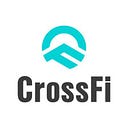Governance Models for CrossFi DEX – Achieving Consensus and Decision-Making in a Decentralized Ecosystem
Introduction
As Decentralized exchanges gain significant popularity in the blockchain space, CrossFi DEX offers products to enable users trade cryptocurrencies without the involvement of intermediaries. However, the success and sustainability of present-day DEXs heavily rely on the implementation of robust governance models. In order to put decision-making in the hands of the users, therefore, CrossFi implements a combination of conventional governance practices by which the DEX remains completely decentralized.
This article looks into the various governance models that are employed on CrossFi, highlighting approaches to achieving consensus, making decentralized decisions, and addressing potential governance challenges.
Governance Models In CrossFi
Token Voting Governance Model: Token holders in CrossFi DEX can play a vital role in decision-making processes. In this model, decision-making power is distributed among token holders. Token voting mechanisms enable stakeholders to vote on proposals, upgrades, and other governance issues. Each token represents a vote, and proposals are approved or rejected based on the majority vote. Token voting can be further enhanced with the introduction of delegation mechanisms, enabling token holders to delegate their voting power to trusted entities or experts.
The Validators in MAP Network
The MAP(Multi-asset Adapter Protocol) network is the core of CrossFi, powering the cross-chain transaction, lending, and liquidity sharing. The validator node in the network is mainly responsible for validating all on-chain activities (such as
transactions) to ensure network security.
Supervision Nodes
The supervision network is designed to be the guardian mainly responsible to double
check the on chain transactions in the entire CrossFi network, to prevent corruption of the nodes like performing unfair transaction verification signatures
Asset Acceptor for Docking Modules
CrossFi deploys an asset docking module system driven by scripting language or
smart contract in each public chain, which is mainly used to convert the native assets of other public chains into the CrossFi ecosystem. Therefore, the acceptor node
often needs to undertake the asset acceptance and will ensure asset security through the threshold signature of multiple nodes and the secure multiparty calculation.
In addition, the acceptor not only requires a certain amount of CRFI native tokens to
stake but also requires a certain amount of corresponding public chain assets to be
locked in the Docking Module.
CrossFi is committed to becoming a decentralized cross-chain asset lending and liquidity sharing protocol. Therefore, a specific governance module will be developed for the community, allowing CRF1 token holders to participate in voting by staking CRFI tokens at any time.
Hybrid Governance Model: A hybrid governance model combines the advantages of both token voting mechanisms and a core team responsible for decision-making. This model aims to strike a balance between efficiency and decentralization. CrossFi implements this by incorporating both token voting mechanisms and a core team responsible for implementing decisions and maintaining the DEX’s operations. Token holders have the power to influence decisions through voting, while the core team focuses on executing those decisions efficiently. This model can strike a balance between decentralized decision-making and effective execution.
CrossFi’s Practices and Considerations for Implementing Governance
- Community Engagement: Foster an active and engaged community by involving stakeholders in decision-making processes. Transparent communication channels and regular community updates can help build trust and ensure widespread participation.
2. Iterative Governance: Embrace an iterative approach to governance. CrossFi is committed to regularly evaluate and refine governance models based on feedback and lessons learned. Flexibility and adaptability are key to ensuring the governance structure evolves with the needs of the ecosystem.
3. Education and Incentives: This aims to educate token holders about the importance of governance and incentivize active participation. Reward mechanisms, such as token rewards for voting or proposals, can encourage stakeholders to contribute their expertise and time to the governance process.
Conclusion
CrossFi Designs effective governance models for achieving consensus and enabling decentralized decision-making. Token voting mechanisms, and hybrid governance models offer different approaches to address governance challenges. By implementing robust governance structures, CossFi is able to foster trust, inclusivity, and sustainability, driving the growth of the decentralized ecosystem.
CrossFi is a cross-chain protocol that provides liquidity for Filecoin staking and rewards.
CrossFi Official Website: https://crossfimain.com
CrossFi DApp Address: dapp.crossfimain.com
CrossFi Official Twitter Account: https://twitter.com/globalcrossfi
CrossFi Official Discord Group: https://discord.gg/UKGSX3VBY3
CrossFi Official Global Telegram Group: https://t.me/crossfimain_en
